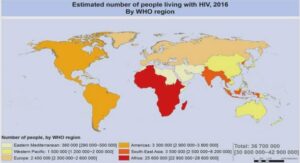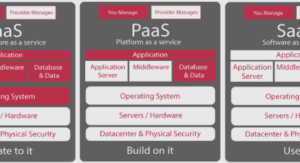In respond to an innovation, individuals may react in different ways. Everyone does not immediately accept an innovation even if it has obvious advantages which have been proven long time ago. This innovation can be an idea, procedure, product, drill and etc. which is considered as new by the practitioners (Rogers, 2010). There are various studies have been done before in field of diffusion of innovation but theory of the DOI was first developed by Rogers in 1960s. The basis of this theory is its compliment about diffusion in which define it as the process of deployment of an innovation within the members of a social system through certain channels. In this definition social system refers to a set of interrelated units which are engaged in joint problem-solving to fulfill a common goal (Rogers, 2010).
After developing the theory of the DOI, plenty of researches have been done based on this opinion in various domains. Raynard (2017) analyzed the results attitudes of student and faculty toward using electronic books as an innovation and aligned them with the DOI theory. Nickerson, Austreich, et Eng (2014) considered mobile technology and Smartphone apps as innovations and examined the diffusion of them in a specific domain. Based on framework of diffusion of innovations, Valle-Cruz et Sandoval-Almazan (2015) found out that local governments have not been completely understood the use of social media. In their study social media was considered as innovation. Wang, Lin, Chang, et Hung (2011) used the tenets of DOI to investigate how radio frequency identification (RFID) technology was deployed and adopted in Taiwan’s logistics industry. Awad, Engelhardt, Coleman, et Rogers (1984), Marsan et Pare (2013)and Romanelli (2016) have done studies about diffusion of innovations in health care organizations and services.
One of the most important discussions in the book of Rogers, Diffusion of Innovations, which is very helpful for this study, is about innovation adopters who are divided into five categories. This grouping is based on “innovativeness” factor which is defined as the degree an adopter is relatively earlier in accepting new ideas than the other members of the system. Therefore, adopter categories include: innovators, early adopters, early majority, late majority and laggards . The bell-shaped curve represents the adoption of innovation on a frequency basis. On the other hand, if the adoption data is plotted based on cumulative number of adopters, the result is an S shaped curve (Rogers, 2010). The S-shaped indicates that by adopting an innovation to laggards (the last group) the market will be saturated and the process of the diffusion will be finished.
However, the focus of this research is to convince decision makers with aspects of laggards toimplement LM in their organization; to better understand the relation between DOI and lean implementation we are going to explain each of five categories in brief. Rogers (2010) describes the characteristics of these groups as follow:
Innovators: The first group of adopters who are eager to try new ideas and accept an innovation. They are interested to take the risk of applying new ideas even if the fail. This interest leads to venturesome become an obsession for them and helps them to have cosmopolite social relationship. They have developed communication patterns and their access to substantial financial resources helps them to absorb the possible loss from risky innovations. They play the role of a goalkeeper in the flow of new ideas into a social system by launching the new idea in the social system with importing the innovation from outside of the system’s borders.
Early adopters: This group is more integrated than the first one. Despite innovators who are cosmopolites, early adopters are localities. They act as a role model among the other groups and are the references for advice and information about the innovation. Hence, they have a respectful place within the social members and because they want to retain this dignity so they must make judicious innovation decisions. Therefore, early adopters decrease uncertainty of a new idea by adopting it and providing an intellectual evaluation of the innovation to near-peers by means of interpersonal networks.
Early majority: The members of this category forming one-third of a system and usually adopt innovations just before the average number of a social system. Their critical position between the very earlier and the relatively late to adopt gives them an interface role in the system who provides interconnectedness. The followers of the early majority may deliberate some time before completely adopting innovations. Therefore, they have longer adoption process than the last two groups. They prefer to communicate others like themselves and rarely take leadership positions and wait to see what competition has to offer. They care about the price but interested to pay for good quality and service (Jahanmir, 2016) .
Late majority: Contrary to early majority, late majority adopts innovation just after the average number of a social system. They also possess one-third of the members of the system. They movement toward innovation can be because of the economic necessity or pressure of the peers. They adopt new ideas with sceptical and cautious approach. Their insufficient financial recourses cause them not feel safe until almost all risks have been removed. Hence, they won’t make adoption until others in their social have done so.
Laggards: Followers of the last group of the innovation adoption almost do not have any idea about leadership. They mainly have traditional attribute and put the past performance as the reference of future plan. They also have interaction with members that have traditional ideas like themselves. Laggards react in a suspicious way with innovations and change agents. Their traditional trend slows down the process of adoption as much as possible and innovation-decision process in relatively long for them. They believe in their hesitation in acceptance of new ideas because of limited recourses they have. Laggards must be certain that an innovation won’t be fail then they will afford to adopt and usually when they convince to do adoption, that innovation may have been substituted by another more recent idea which is already being used by the innovators. A good example for this case is the tendency of the companies to use new ERP software to manage the recourses years after applying reengineering and quality management tools such as LM.
INTRODUCTION |





